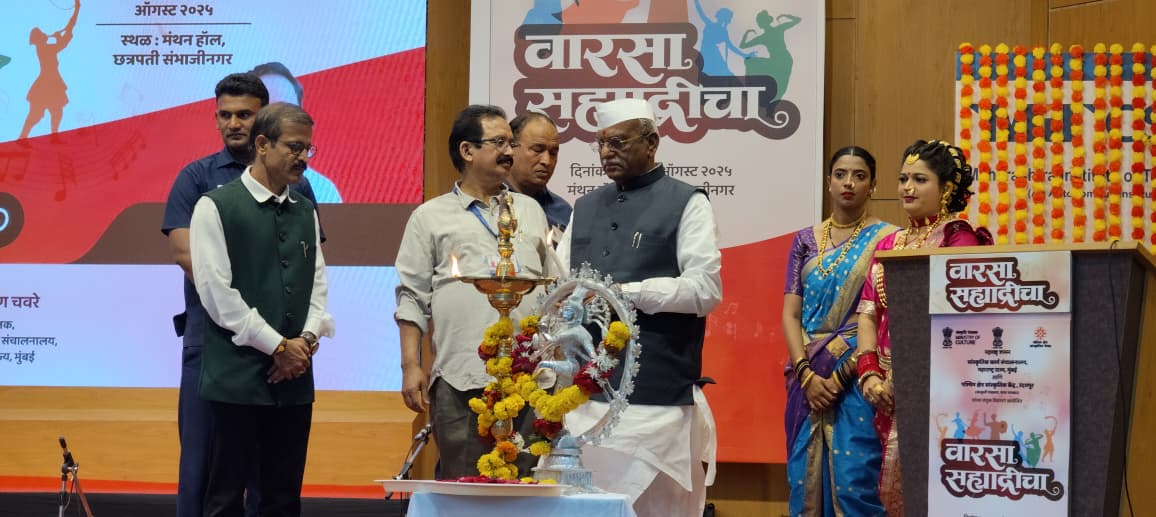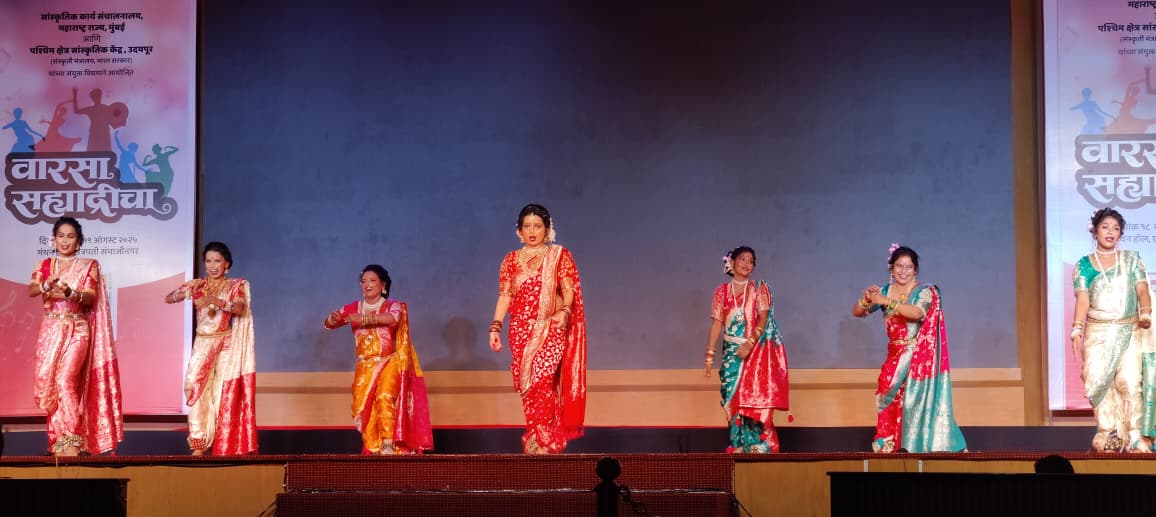
Chhatrapati Sambhajinagar / Udaipur, Aug 19: Rajasthan Governor Haribhau Kisanrao Bagde emphasized the importance of imparting art and cultural education to children and providing them a platform so that India’s folk heritage can be preserved. He was addressing the valedictory session of the two-day cultural festival ‘Warsaa Sahyadricha’ organized by the West Zone Cultural Centre (WZCC), Udaipur, under the Ministry of Culture, in association with the Directorate of Cultural Affairs, Mumbai, at MIT College’s Manthan Hall in Chhatrapati Sambhajinagar.

Governor Bagde stated that India cannot be enslaved again because its strength lies in cultural unity. “If this culture remains intact, no power can cast an evil eye on India,” he remarked. Stressing the need to replace Macaulay’s colonial education system, he called for an education policy rooted in Indian values and heritage. He also appreciated WZCC Udaipur director Furqan Khan and his team for successfully organizing such festivals across India.
The event was inaugurated with traditional lamp lighting, worship of Lord Nataraja’s idol, and the singing of the national anthem along with Maharashtra’s state song. Guests were felicitated with shawls and floral bouquets.
Kathak Ballet & Lavani Mesmerize Audience
The highlight of the evening was the renowned Kathak exponent Shama Bhate’s ballet ‘Krishna the Liberator’, performed with her troupe of 14 dancers including Amira Patankar and Avani Gadre. Through intricate expressions, rhythm and choreography, they portrayed Lord Krishna’s episodes such as Kaliya Naag Vadh, Govardhan lifting, slaying of Kansa, Makhan Chori, and Vastraharan, symbolizing liberation from fear and societal evils. The ballet also subtly depicted Krishna’s love for nature and resistance against orthodoxy, winning thunderous applause from the audience.
Equally captivating was the energetic Lavani dance by celebrated artiste Pramila Suryavanshi, whose graceful expressions and swift movements in the traditional nine-yard saree reflected the rustic charm of Maharashtrian folk. The performance, set to the beats of dholki and ektal, electrified the hall with repeated rounds of applause.
Symphony of Folk Instruments
Another major attraction was the folk symphony blending traditional instruments from Rajasthan, Kutch and Maharashtra. The desert rhythms of khartal, sarangi, kamaicha, morchang, matka, harmonium, dholak combined with Kutch’s jodia pava, veena, gamelu, manjira and Maharashtra’s tutari and naal created a unique musical landscape, enthralling the audience.
Choreographic Fusion of Seven States
Under the direction of Santosh Nair, a choreographic showcase brought together diverse folk dances: Maharashtra’s Gondhal, Goa’s Samai, Rajasthan’s Chari and Kalbelia, Gujarat’s Rathwa and Siddi Dhamal, Manipur’s Pung Cholom, West Bengal’s Purulia Chhau (Natua), and Punjab’s Bhangra. The vibrant confluence of costumes, rhythms and formations transformed the auditorium into a celebration of India’s cultural unity, earning repeated standing ovations.
WZCC Director Furqan Khan remarked that such festivals are aimed at bridging cultural distances by bringing the folk heritage of one region to another, allowing art lovers and common people to experience India’s diversity.
The two-day cultural fiesta truly lived up to its name ‘Warsaa Sahyadricha’ (Heritage of the Sahyadris), leaving audiences enthralled with a rare blend of tradition, rhythm, and artistic brilliance.